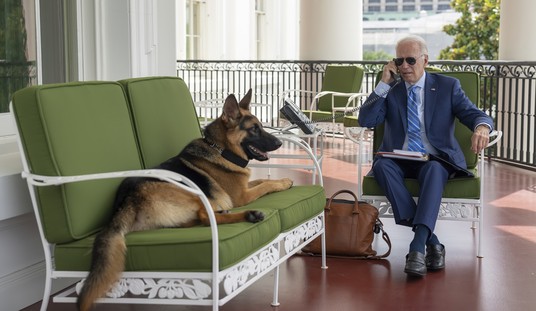
In this photo taken on Wednesday, Oct. 7, 2015, Syrian army howitzers fire near the village of Morek in Syria. The Syrian army has launched an offensive this week in central and northwestern Syria aided by Russian airstrikes. (AP Photo/Alexander Kots, Komsomolskaya Pravda, photo via AP)
Did I say the Spanish Civil War? I meant the Syrian Civil War, of course. Silly me for mistaking a festering conflict from the 1930s which various major powers used as a testbed for their weapons, doctrines, and belief systems for a festering conflict from the Twenty-Tens which various major powers are using as a testbed for their weapons, doctrines, and belief systems.
The parallels become clear when reading the latest from the New York Times:
Two weeks of air and missile strikes in Syria have given Western intelligence and military officials a deeper appreciation of the transformation that Russia’s military has undergone under President Vladimir V. Putin, showcasing its ability to conduct operations beyond its borders and providing a public demonstration of new weaponry, tactics and strategy.
The strikes have involved aircraft never before tested in combat, including the Sukhoi Su-34 strike fighter, which NATO calls the Fullback, and a ship-based cruise missile fired more than 900 miles from the Caspian Sea, which, according to some analysts, surpasses the American equivalent in technological capability.
…
Taken together, the operations reflect what officials and analysts described as a little-noticed — and still incomplete — modernization that has been underway in Russia for several years, despite strains on the country’s budget. And that, as with Russia’s intervention in neighboring Ukraine, has raised alarms in the West.
In a report this month for the European Council on Foreign Relations, Gustav Gressel argued that Mr. Putin had overseen the most rapid transformation of the country’s armed forces since the 1930s. “Russia is now a military power that could overwhelm any of its neighbors, if they were isolated from Western support,” wrote Mr. Gressel, a former officer of the Austrian military.
Putin hasn’t just demonstrated Russia’s renewed military prowess — he’s done so well beyond Russia’s traditional “near abroad” for the first time since the end of the Cold War. That’s the kind of thing which ought to make leaders sit up and take notice, but officially, at least, the White House is in denial of its significance.
If you’ll excuse a tangent, we must travel briefly back to Europe, because Putin does like to keep several fires going at once.
The one place where Russia appears to be retreating is in Belarus. There had been plans floated last month for a big expansion of Russia’s military presence there, plans which now seem to have been scuttled by the government in Minsk. But you have to wonder if this isn’t a ruse by Belarus leader Alexander Lukashenko, still in power after more than 20 years and virtually Soviet in his rule.
Lukashenko has allowed a few protests and denied Moscow its military expansion, which has Western interests just dying to reopen trade despite a national election this month which the UN says was “neither free nor fair.”
But a Belarus more open to Western banking and investment might just be a Belarus more able to help Russia sneak past Western sanctions. Despite the dissolution of the Soviet Union in 1991, Belarus has remained tight in Moscow’s orbit. Only a fool would think that a month of legalized protests and forestalling (or perhaps merely postponing) the arrival of a few fighter jets means that anything essential has changed in their relationship.
There are, however, plenty of fools in Western capitals, and Putin is playing them as such.
Back now to Syria, where of course the historical parallels only go so far.
Today’s players in Syria, foreign and domestic, are not the same as the players in Spain 80 years ago. Nobody would mistake Assad for Manuel Azaña, Putin for Adolf Hitler, Obama for a resolute leader of the International Left, or ISIS for … anything other than ISIS.
Spain at the time was a European backwater — a convenient place for Stalin and Hitler to wage a small-scale proxy war, but little else. Syria, however, sits near the strategic heart of the Middle East, and its eastern desert plays host to the world’s most vicious practitioners of the world’s cruelest and most virulent ideology.
Arguably, the stakes today in Syria are far higher than they were in pre-war Spain.
One of today’s foreign players understands those stakes. The other can’t even get a meeting with him — because why should Putin listen to the man who won’t even listen to his own advisors?











Join the conversation as a VIP Member